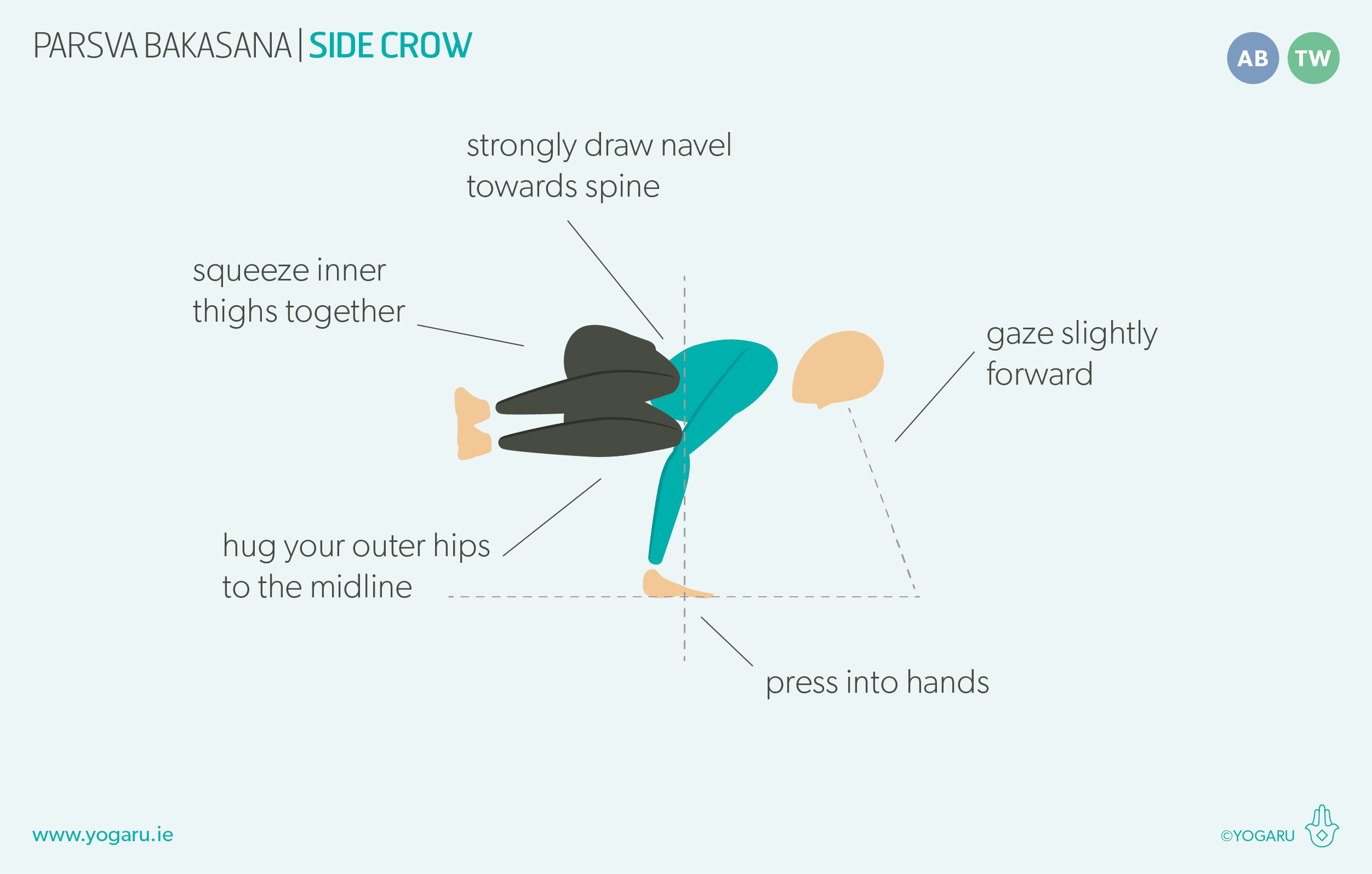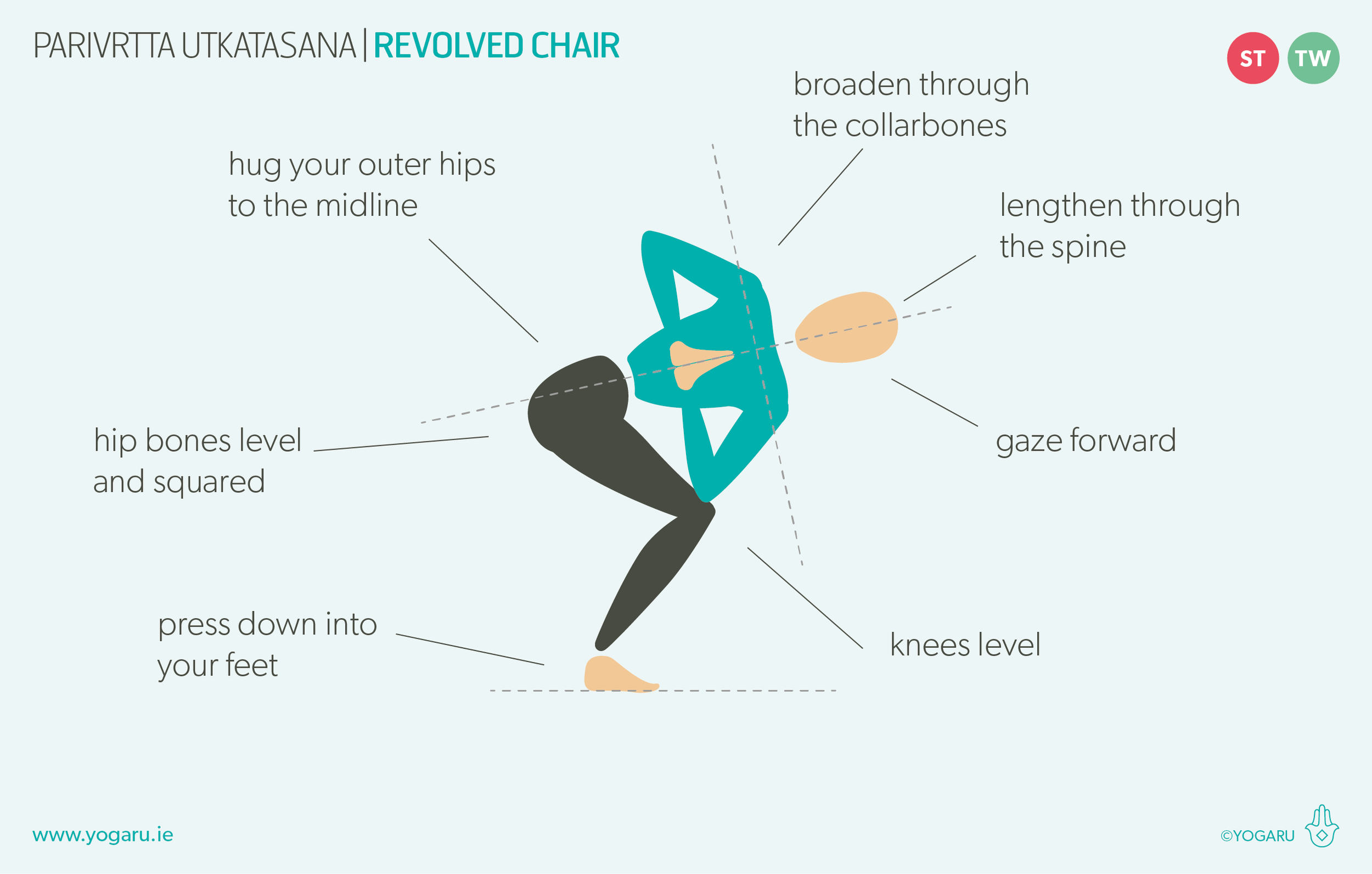THINK LIGHT AND LIFT
In yoga there are poses with sister poses that keep the same foundation and add an upper body twist into the equation – Utkatasana & Parivrtta Utkatasana; Ashta Chandrasana & Parivrtta Ashta Chandrasana and Bakasana/Crow & Parsva Bakasana/Side Crow. If you find you are happily taking flight in Bakasana/Crow, and you are able to take a deep twist, it might be time to try Parsva Bakasana/Side Crow. Both poses are challenging arm balancing poses but you might be surprised to find that a strong core is more important than strong arms. With a strong core you can scoop your belly in to create the required curve in the spine, control your centre of gravity, and take some of the force out of the wrists. A strong core will also give a fulcrum to the pose, and a lightness to the lifting leg as you tip the weight forward, like the principle of a seesaw.
THE BENEFITS OF PARSVA BAKASANA/SIDE CROW
Parsva Bakasana/Side Crow is a twisted, arm balancing pose. It stretches the muscles of the spine, core and glutes, and strengthens the shoulders, spine, core, hip flexors, glutes, groins and hamstrings. As an arm balance it builds heat, confidence, stamina, balance, coordination, focus, energy and strength. As a twisted pose it aids detoxification, digestion, tones the abdominal organs, boosts the immune system, circulation and eases fatigue, stress, tension and anxiety. It gives the gut a fantastic twist which makes it a great pose to practise if you find you need a bit of help to get, or keep, things moving.
EXPLORING PARSVA BAKASANA/SIDE CROW IN YOUR PRACTICE
Similar to Bakasana/Crow, if you are nervous of face planting, place a pillow or blanket on the ground in front of you. If you are not able to lift the second foot, practice lifting one foot up and hold for a few breaths. Use your strong core to play with your centre of gravity by tipping your weight forward until you feel ready to lift the legs. You might find your wrists fatigue very fast, but they also come back to life quickly too. Sit back on your heels and circle tour wrists until they feel ready to give the pose another go.
If your shoulders would benefit from some propped support you can try the first version of the peak pose in the sequence where you use a brinks under each shoulder at their highest height. Remember the bricks are not very sturdy so be sure to use your core to power the pose and the bricks up gently support the shoulders rather than take all your body weight.
ALIGNMENT CUES
This sequence warms up the spine with lots of twists and prepares the core, shoulders and arms without fatiguing them before your peak pose.
Have a read of the tips below and either print out the sequence or save it onto your device:
From Malasana, step your feet together, twist to your right, place your hands on the ground to the right of your feet a little wider than shoulder width, fingers facing away from the legs.
Bend your elbows and place your left elbow above your right knee.
Strongly draw your navel towards your spine, round your upper back. Lean to your right side, shift your weight into your hands.
Exhale, with control, lift your feet up one at a time or both together, squeeze your inner thighs together, press into your hands, gaze slightly forward.
To save the images for personal use click and hold down the image until the ‘save image’ option appears; on Mac hold down ‘control’ and click the image to get the option box; on PC right click on the image to get the option box. Scroll down in the ‘option box’ and click ‘save image’.
Ruth Delahunty Yogaru







